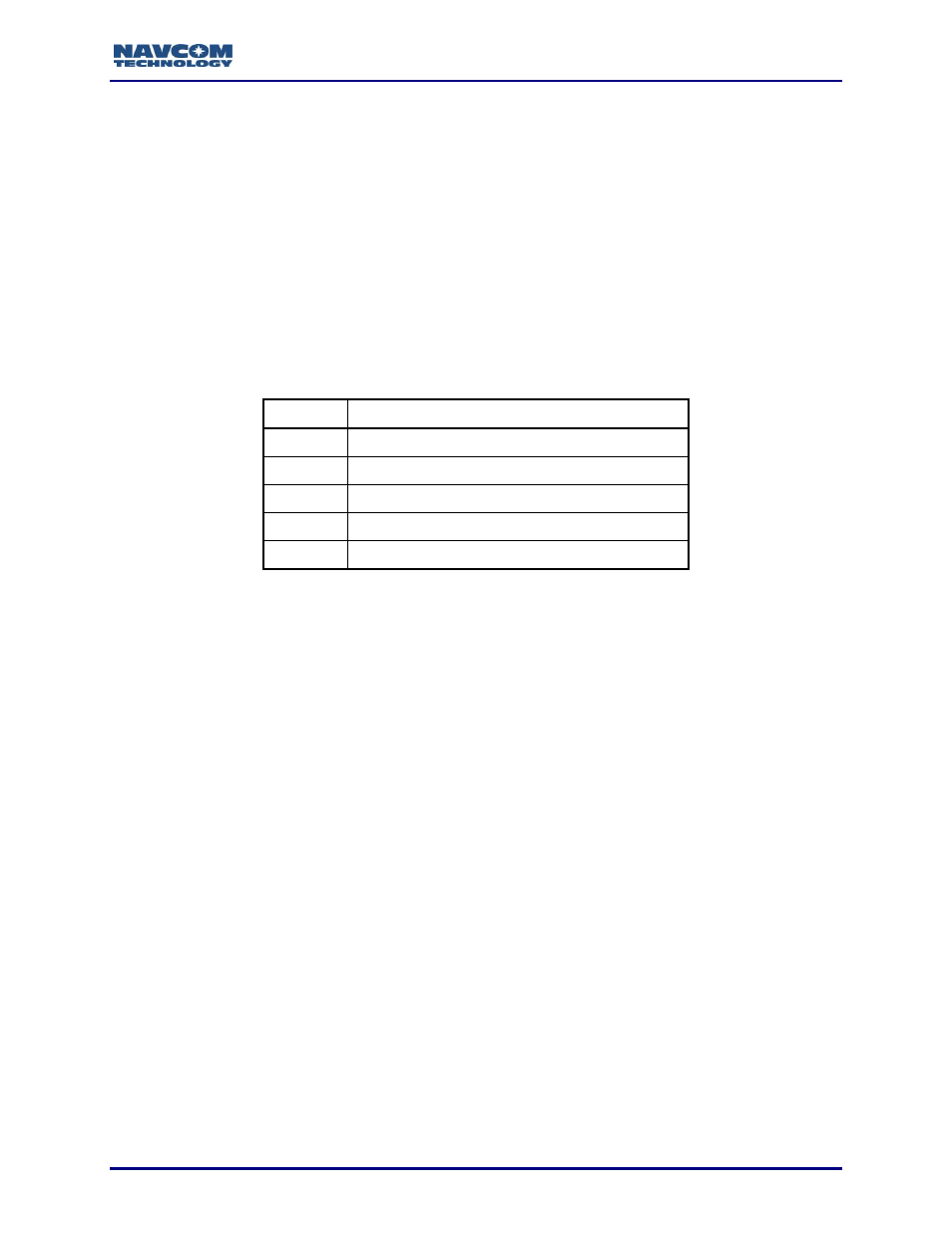Bit mask of gnss satellite constellation usage, Bit mask of gnss satellites used – NavCom Sapphire Rev.J User Manual
Page 350

Sapphire Technical Reference Manual Rev. J
350
Solid earth tide corrections are not applied to the reported position in any other modes of
navigation other than StarFire RTG, although the deformation vector is still computed
and output in the PVT1B message.
These values are presented as signed sixteen bit integers scaled to 1/1000th of a meter.
2.91.13
Bit Mask of GNSS Satellite Constellation Usage
The bits set in this field denote the satellites by type that will show up in the next two
data fields. For example, if GPS (bit mask value 0x01) is set, the GNSS satellite used
field will be filled by used GPS satellites. If GLONASS bit is set, the following GNSS
satellite used field will be filled with used GLONASS satellites, and otherwise it will be
filled by other constellation satellites or not exists at all if no more constellation used.
Note that the fields here are ordered, meaning when two bit mask values are set, the
lower bit number occupies GNSS1, below and the higher GNSS2.
Table 183: GNSS Satellite Constellation Usage Bit Mask
Bit
Data Item
0
GPS
1
GLONASS
2
Galileo
3
COMPASS
4
SBAS
2.91.14 Bit Mask of GNSS Satellites Used
These indicators display a bit mask of the satellites used in the position and velocity
solutions.
The number of satellites used in the position solution can be different than the number of
satellites used in the velocity solution. This can occur because operation in differential
GPS modes requires that all satellites used in the position solution must have a valid
dGPS correction. However the velocity solution, which uses sequential time differences
of the integrated carrier phase measurements, does not require dGPS corrections.
Similarly, in dual frequency navigation modes, satellites used in the position solution
must be tracking on both the L1 and L2 frequencies, whereas the velocity solution only
requires tracking on L1.
The number of satellites tracked can be different (larger) than both the number of
satellites used in the position solution and in the velocity solution. This can occur when
satellites are being tracked at elevations below the elevation cutoff for navigation.
The satellites used in the position and velocity navigation solutions are output as 32 bit
unsigned integers. The bit is set if that PRN was used. For GPS and GLONASS, the
least significant bit represents PRN 1 and the most significant bit represents PRN 32. If
the WAAS constellation usage field is set, the least significant bit represents the lowest
SBAS PRN, number 120. The bit 1 represents SBAS number 121, etc.
